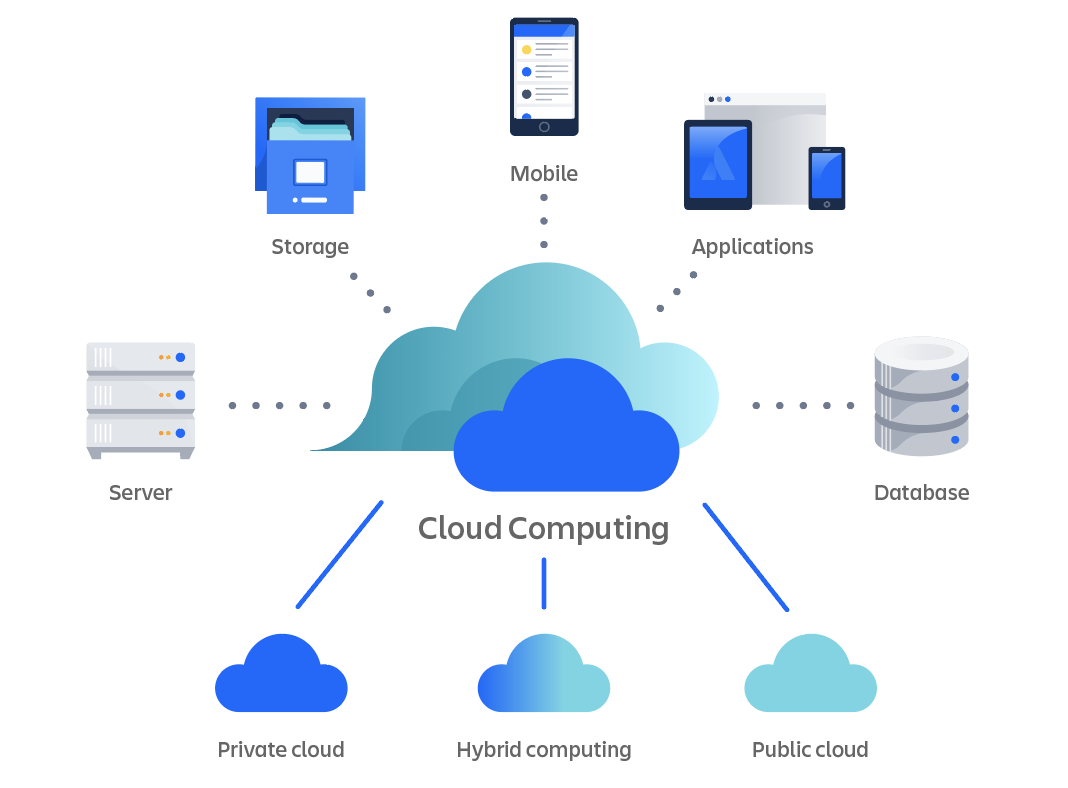Simplify Your Infrastructure With Cloud Services
As organizations browse the ever-evolving landscape of innovation and data management, the role of cloud solutions in simplifying framework has actually come to be increasingly noticeable. Exactly how can companies efficiently navigate this shift and absolutely open the possibility of cloud solutions for simplifying their framework?
Advantages of Cloud Solutions
Cloud solutions provide a streamlined strategy to managing IT framework, giving services with scalability, versatility, and cost-efficiency. Among the crucial advantages of cloud services is the scalability they offer. Services can easily scale their resources up or down based on demand, guaranteeing they only spend for what they make use of. This adaptability is particularly useful for organizations with rising and fall needs or those experiencing growth.
In addition, cloud services get rid of the need for companies to purchase costly hardware and software program. This cost-efficiency is a considerable benefit, specifically for tiny to medium-sized business aiming to reduce ahead of time expenses. By utilizing cloud solutions, organizations can access high-grade IT resources without the significant cost related to standard infrastructure arrangements.
In addition, cloud solutions offer organizations with the versatility to access their information and applications from anywhere with a net link. This level of accessibility improves cooperation among groups, enables remote work, and enhances overall productivity. The adaptability used by cloud services empowers services to adapt quickly to transforming market conditions and consumer needs.
Expense Cost Savings and Scalability
Along with the functional benefits highlighted previously, the combination of cloud solutions into a business's framework yields considerable price savings and boosted scalability. Cloud solutions supply a pay-as-you-go version, allowing organizations to range resources up or down based on current requirements, therefore preventing the prices connected with preserving excess capability. This versatility allows business to adapt promptly to rising and fall needs without sustaining unneeded expenditures.
Furthermore, cloud solutions eliminate the need for ahead of time investments in software and hardware, reducing capital investment. Operating costs are also reduced as companies no longer need to take care of and preserve physical web servers, bring about lower power usage and IT staffing prices. Furthermore, cloud services provide automated updates and upkeep, making certain that the infrastructure remains secure and updated without requiring manual interventions.
Enhanced Safety And Security Actions
Implementing rigid safety and security steps is extremely important when integrating cloud services right into a business's facilities to make certain and safeguard delicate data conformity with industry policies. Cloud service carriers supply enhanced safety and security features such as information security, firewall software protection, and multi-factor authentication to mitigate cybersecurity dangers.
In addition, normal security audits and compliance analyses aid identify susceptabilities and ensure adherence to market requirements. Business can additionally profit from features like computerized get more safety and security updates and real-time hazard tracking given by cloud solution companies. By prioritizing safety and security steps and staying positive in addressing prospective threats, companies can confidently utilize cloud solutions while safeguarding their important data from unauthorized accessibility or breaches.
Transitioning to Cloud Infrastructure
To successfully incorporate cloud solutions right into a company's facilities, a structured strategy that addresses the shift in the direction of cloud-based remedies is vital. Transitioning to shadow infrastructure entails cautious preparation and implementation to make sure a smooth migration process. The very first step is to assess the present framework and identify which applications and systems appropriate for migration to the cloud. This evaluation must think about factors such as information level of sensitivity, conformity requirements, and performance requirements.
Once the assessment is complete, a migration approach should be created. This technique should lay out the timeline, sources, and obligations for moving each part to the cloud. It is vital to interact this strategy plainly to all stakeholders to guarantee positioning and reduce interruptions during the change.
During the movement monitoring, screening and procedure are vital to recognize and deal with any problems promptly. Normal checkpoints should be established to track progression and make necessary adjustments. Additionally, training for workers on making use of cloud services must be supplied to try this ensure an effective change and maximize the benefits of the brand-new facilities.
Ideal Practices for Cloud Adoption
Successful fostering of cloud services depends upon the critical placement of company goals with technical capabilities and organizational preparedness. To make sure a smooth shift to the cloud, companies should begin by carrying out a detailed evaluation of their existing facilities and recognizing which work are best fit for cloud movement. It is crucial to involve key stakeholders from different divisions check over here in the decision-making procedure to acquire buy-in and address any type of worries early.
An additional ideal technique for cloud fostering is to focus on security and compliance. Organizations needs to meticulously assess the security actions used by cloud provider and ensure that their information is secured according to market criteria and governing demands. Implementing robust data file encryption, access controls, and regular security audits can aid alleviate dangers connected with cloud fostering.

Final Thought

As companies navigate the ever-evolving landscape of innovation and information management, the role of cloud solutions in streamlining facilities has ended up being progressively noticeable - linkdaddy cloud services. How can services effectively browse this shift and absolutely open the capacity of cloud services for streamlining their facilities?
Cloud solutions supply a streamlined method to handling IT infrastructure, giving services with flexibility, cost-efficiency, and scalability. By using cloud solutions, services can access high-quality IT resources without the hefty cost tag linked with traditional infrastructure arrangements.
To make certain a smooth transition to the cloud, companies must begin by performing a comprehensive evaluation of their present facilities and recognizing which work are best fit for cloud migration.
Comments on “LinkDaddy Cloud Services Decoded: Expert Insights right into Universal Cloud Service Advancements”